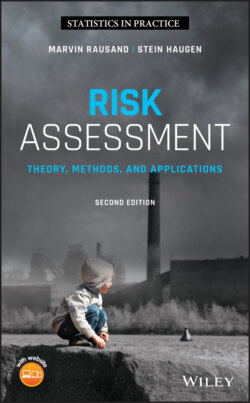Читать книгу Risk Assessment - Marvin Rausand - Страница 236
Definition 5.1 (Risk acceptance criteria, RAC)
ОглавлениеCriteria used as a basis for decisions about acceptable risk (NS 5814 2008).
RAC can be quantitative and/or qualitative. Some standards and guidelines find it essential that certain qualitative principles be adopted, irrespective of the numerical value of quantitative acceptance criteria (e.g. see NSW 2011). Examples of qualitative criteria include the following:
All avoidable risk should be avoided.
Risk should be reduced wherever practicable.
The effects of events should be contained within the site boundary.
Further development should not pose any incremental risk.
No single component failure should lead to serious consequences.
Some of these criteria are not very precise. What is “avoidable risk”? What is a “practicable” risk reduction? Without further guidance on what these terms mean, they can be interpreted very differently by decision‐makers. Most things are in principle “avoidable” and the term “practicable” can mean very different things to people. It may be observed that some of these criteria are useful for design purposes. The third and the last criterion can both be used directly as design criteria for technical systems.
RAC may be based on requirements from authorities, standards, experience, theoretical knowledge, and norms. The level of risk that is considered “acceptable” in a given context depends on several factors, among others, the benefits we get from the activities that cause the risk and whether or not the risk is voluntary. NS 5814 (2008) defines acceptable risk as follows:
